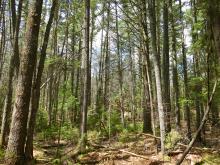Secondary tabs
Submission information
| Study Title | Holt Research Forest |
|---|---|
| Case Study Type | Forest type, Forest health, Management type |
| Management Subcategory | ecological restoration |
| Site Photo |
|
| Lay Summary | The Holt Research Forest is the site of long-term forest ecosystem research in Arrowsic, Maine. Research goals are to monitor long-term changes in the forest's plant and animal populations, and to document the effect of ecologically-based forest management on these populations. The woods are predominantly dry-ridge, oak-pine ecosystem in Maine's coastal climatic and midcoast biophysical regions. |
| Location | Arrowsic, Maine |
| Location Description | Arrowsic is an island surrounded by multiple rivers in Maine's mid-coast region. It has the greatest woody plant species richness in the state, as it is home to the transition between the Northeastern coastal forest and the New England/Acadian forest. |
| Latitude | 43.868886 |
| Longitude | -69.776027 |
| Directions | 508 Old Stage Road. It is found 2.3 miles south of the intersection with Route 127. |
| Accessibility | Accessible by vehicle and foot. There are research and education footpaths marked on the Stand Map. Not for recreational use. |
| Landowner Name | Maine TREE Foundation |
| Landowner phone | +1 207-621-9872 |
| Landowner email | info@mainetree.org |
| Stand Area with Units | 304.5 acres |
| Cover Type | Mixedwoods |
| Natural Community Classification | Oak-Pine Forest |
| Plant Community/Habitat Class Growth Stage | Variable, but mid-successional overall. |
| Primary Forest Health Threat | pest complex |
| Secondary Forest Health Threats | , |
| Soils | Medium Intensity - Lyman (64%), Adams, Biddeford, Boothbay, Brayton, Marlow, Peat Swamp, Peru, Rock Outcrop, Swanville |
| Estimated Stand Year Origin | Variable |
| Start date | Wed, 02/01/2017 - 00:00 |
| Stand History | In the late 1700s, woodlands were clearcut for farming, and this is evident on the HRF property from the stone walls, wire fences, cellar holes, and smooth soil surfaces that infer plowing in the past. The northern part of the property has agricultural history where open fields were evident into the 1940s. Some areas were used for pasture, and in the southern region of the land, forest abandonment transpired in the late 1800s or early 1900s. There was a timber harvest to the west of Old Stage Road in 1929. The Holt Family bought the property in 1940-1941. The research program began in 1983, finding the owners planted white pine in the old fields, and occasionally performed partially timber harvest, mostly on the dead/dying trees. Research blocks occurred from 1983-1987, and the initial harvest was performed in the winter of 1987-1988. This harvest removed poorly-formed, large trees to create harvest gaps and release advanced regeneration while encouraging natural regeneration. This harvest removed 44% of the basal area. |
| Pre-Treatment Forest Health Issues | Hemlock Wooly Adelgid, Browntail Moth, White Pine decline, and deer . |
| Case Overview | The Holt Research Forest is the site of long-term forest ecosystem research in Arrowsic, Maine. The original research goals are to monitor long-term changes in the forest's plant and animal populations and to document the effect of ecologically-based forest management on these populations. The woods are predominantly a dry ridge, oak-pine ecosystem, in Maine's coastal climatic and midcoast biophysical regions. A group selection harvest was conducted on 10 hectares of the study area in 1987-1988, and a selection harvest was conducted in 2020-2021 on about 47 hectares in the research and non-research blocks. Six hectares within the study are were left as uncut control blocks. The harvest project was successful. Research is ongoing. |
| Silviculture Objectives | Silviculture objectives include encouraging regeneration establishment and the release of existing regeneration, encourage age, species, and density diversity with the goal of creating a more resilient forest in the age of climate change. |
| Landowner Objectives | The landowner objectives include demonstration forestry, long-term research, income productivity. |
| Silviculture Prescription | Trees were not marked for harvest, but the following prescription was followed by the logger, in regular consultation with the forester. All merchantable balsam fir and aspen (neither are abundant) should be harvested. All white birch and white ash sawtimber are to be cut. All diseased beech less than 13" diameter are also designated for harvest. Larger beech trees are to be retained for their wildlife food value, as are larger white ash trees, which do not have sawtimber value. Low quality white pine are abundant. Pine trees were thin, broken, or crowded tops should be harvested. Pines with excessively weeviled tops should be harvested as well, leaving the largest and oldest are legacy/seed trees. Hemlock that have been defoliated by the hemlock wooly adelgid should be cut. Red spruce should be favored for retention as much as possible. Hardwoods (oak, red maple, white oak) should be thinned, favoring well-formed trees with healthy crowns for retention. Standing dead or live cull trees should be left standing unless they are a safety hazard during logging. Taller trees growing on ledge and susceptible to windthrow should be harvested. Overall, an estimated 33-40% of the standing volume will be harvested, averaging the areas of heavier cutting with areas of little to no cutting (inaccessible ledges, stream banks, etc.). The remaining forest will be a mixture of tree species, sizes, and densities. This diversity will hopefully foster resilience into the future. |
| Regeneration Targets/Goals | Regeneration targets and goals include harvesting 33-40% of the standing volume, with the remaining forest to be a mixture of tree species, sizes, and densities. Deer browse is a problem as well, for regeneration and the herbaceous layer, and 4 deer enclosures were established for research purposes after the harvest, and Trico (a deer repellent based on sheep fat) has also been used experimentally. |
| Regeneration Method | irregular shelterwood |
| Factors Influencing Prescription Choice |
|
| Climate Adaptation Considerations | They influenced the desire to retain a variety of species, including white oak (likely to become more common as the climate warms) and red spruce (likely to become less common as the climate warms). Also, the main skid trail and a main stream crossing were laid out with the consideration of increased intensity of storm events, and increasingly warmer winters with unpredictable freezing of the ground. |
| Equipment used | Cut-to-length system, processor, and forwarder. |
| Prescription Notes | We weren't able to complete the winter harvest, due to warming weather and road postings in March. The remaining unharvested 13 acres weren't enough for the logger to justify the cost of moving his equipment back to finish. |
| Post-Treatment Assessment Done | yes |
| Post-Treatment Assessment | Post-treatment stocking and distribution is quite satisfactory. Regeneration is becoming established, although deer browse is a problem, especially on oak. Unfortunately, the oak leaf roller has caused defoliation and some mortality in the residual overstory oak. |
| Treatment Total Time | Harvest took place from October 2020-March 2021 |
| Treatment Total Cost | Income to Maine TREE Foundation |
| Future Treatment Plans | Harvest may be conducted on west side of Old Stage Road in the future. |
| Additional Considerations/Key Details |
|
| General Notes | Access Road was created for the recent harvest, as well as for future harvests. |
| Primary Contact | Logan Johnson |
| Contact Organization | Maine TREE Foundation |
| Contact Email | logan@mainetree.org |
| Additional files | |
| Additional Photo 1 |
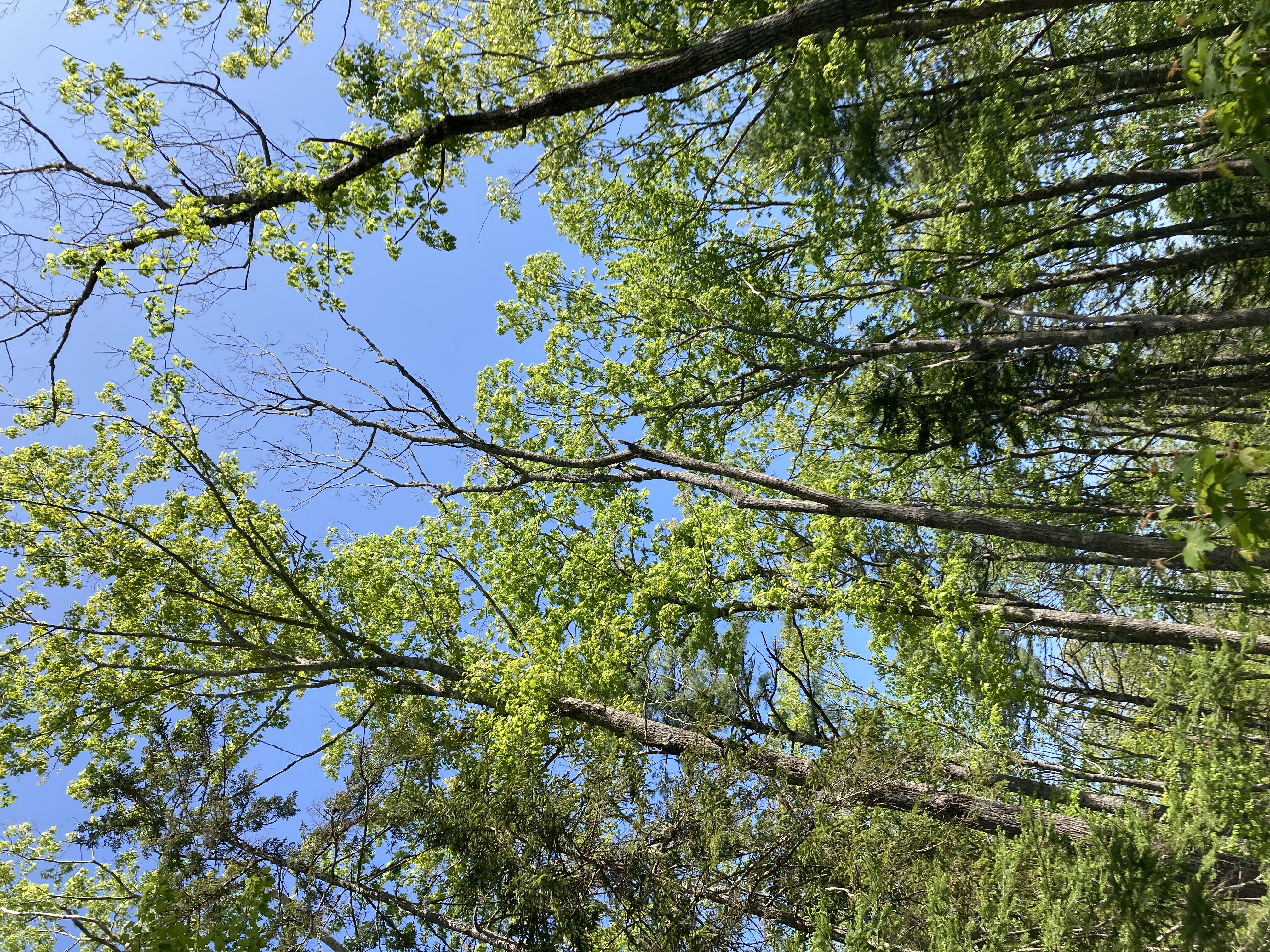
|
| Additional Photo 2 |
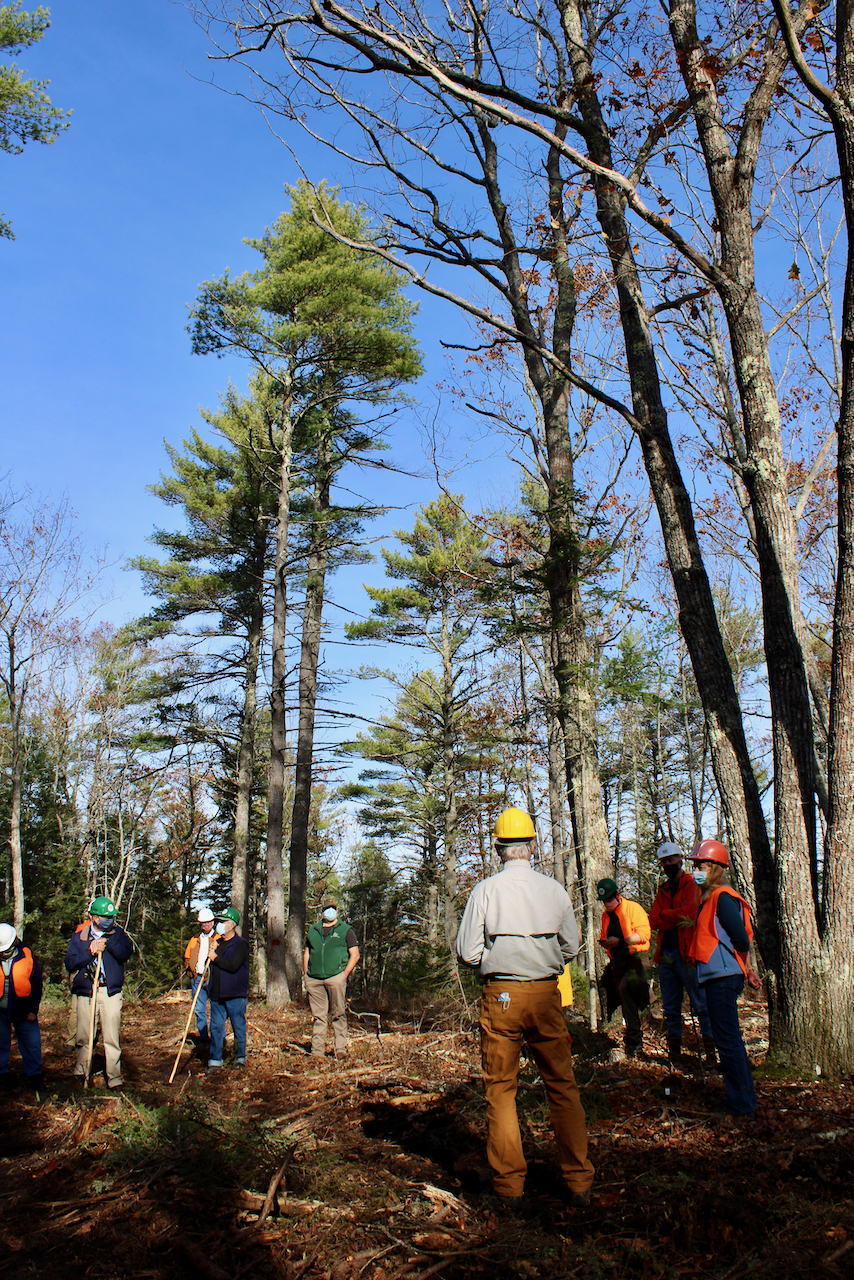
|
| Additional Photo 3 |
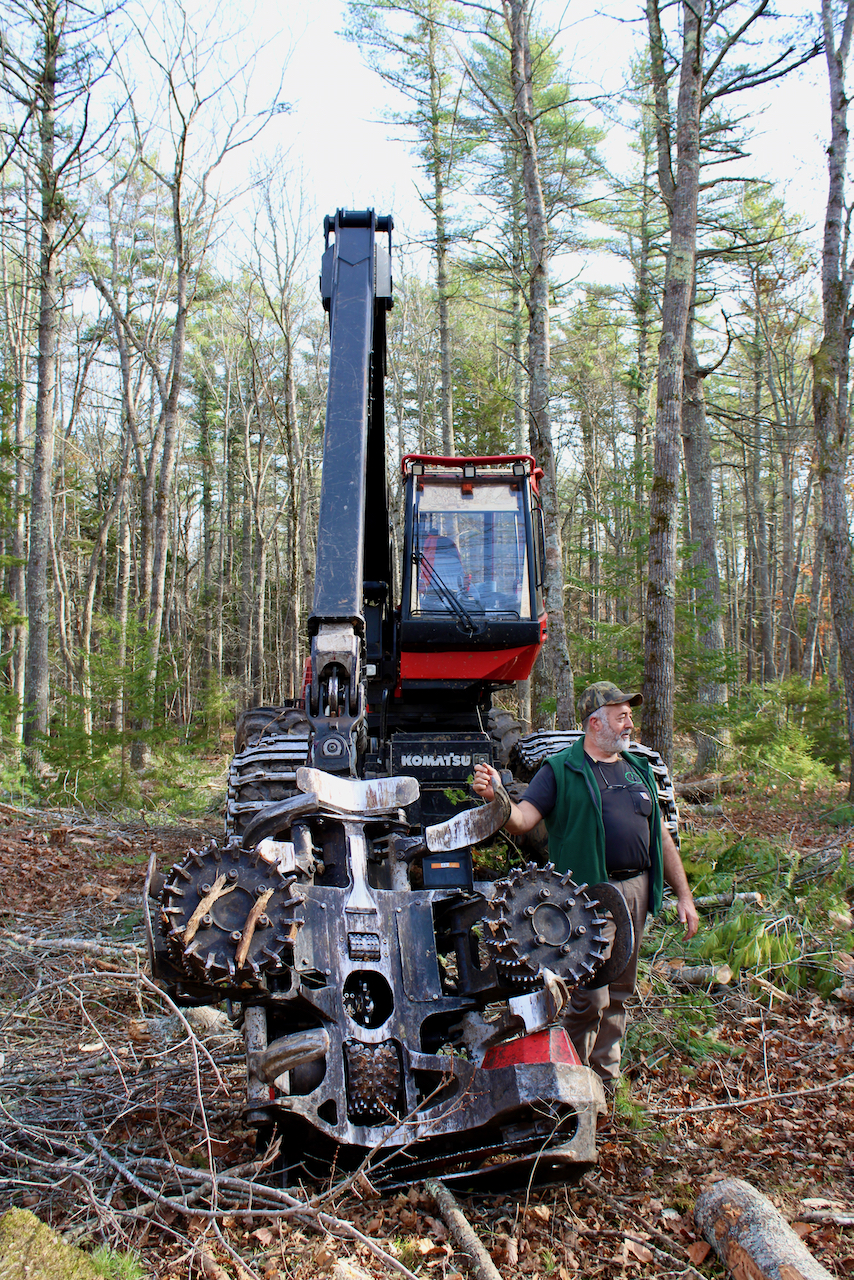
|
| Additional Photo 4 |
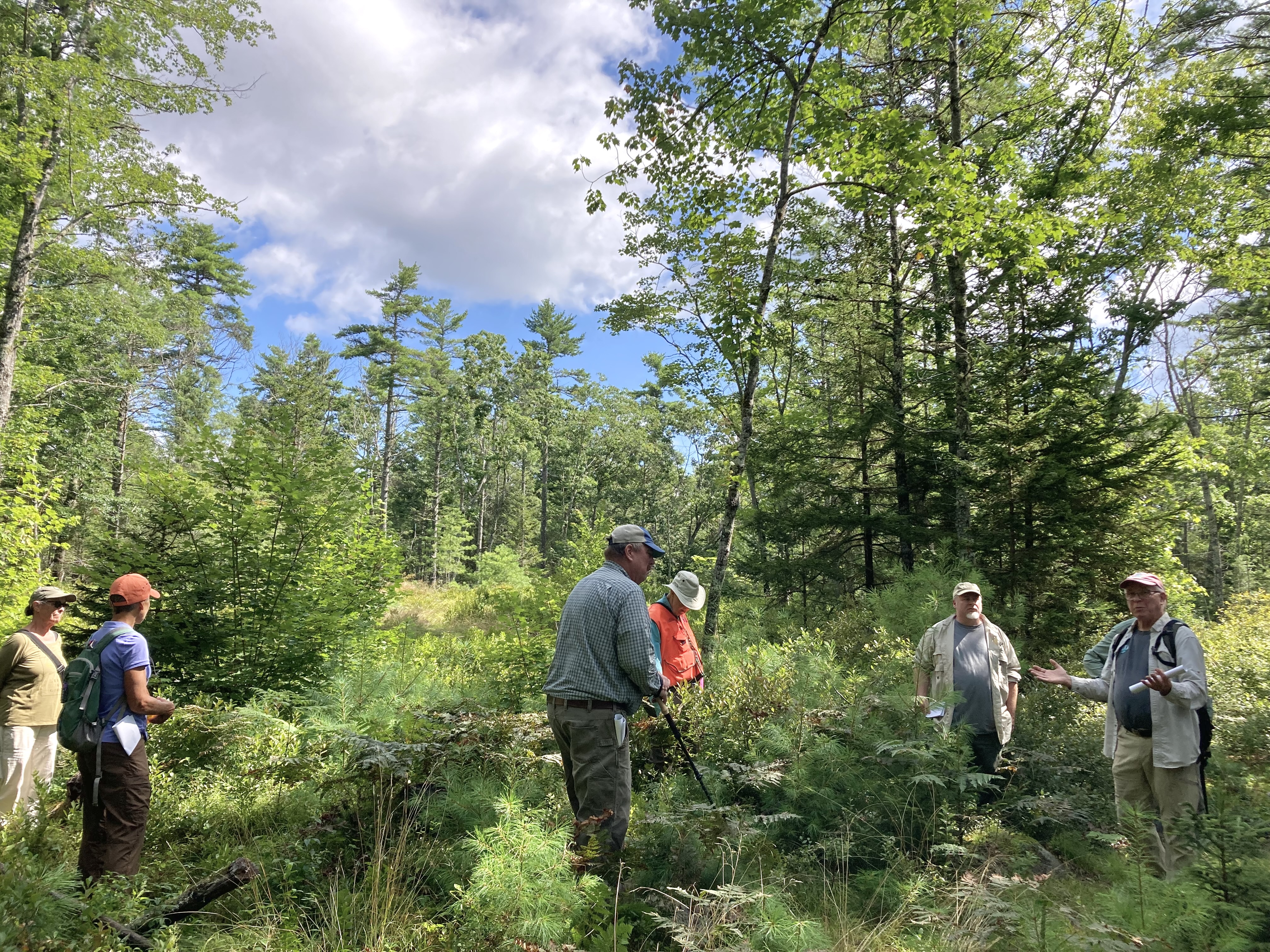
|
